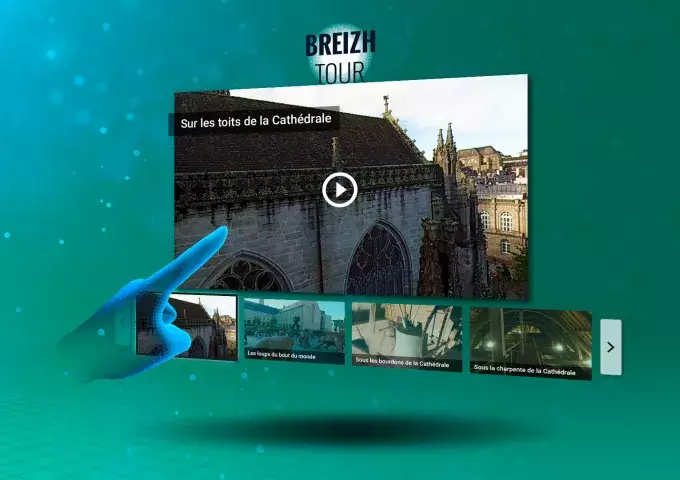
Compared to augmented/mixed reality, virtual reality is more immersive and better suited to put the user into a global environment.
There are several types of headsets for different uses of virtual reality.
Features
Virtual tours in 360°
Interactions with a 3D model
Placement of 3D objects
Monitoring
Simulation
Plateforms
Android
Technologies
Android & Unity 3D
Materials
Headsets connected to a PC or console for gamers or complex simulations.
Stand-alone headsets for viewing 360° movies or simple 3D environments.
Cardboard" type headsets that can integrate all types of smartphones for a first experimentation of V.R
Examples
Tourism and Heritage
In order to give tourists a taste of the "things to see", tourist offices are increasingly using VR helmets. They allow to show in 360° the emblematic places of a destination but also reconstitutions of a district or a moment for example.
4.0 industry
Engineers use virtual reality to design new parts or to simulate changes in flow management. Parts of the factory are reproduced in 3D and visible in a helmet, allowing them to carry out tests without impacting the production lines.
Formations & company visits
In training and especially in professional training, the VR helmet is becoming an essential tool. By simulating risky situations in a work environment, the user prepares for possible accidents or stressful situations. This experience allows training without taking risks and without mobilizing a work space.
Trade show
To make your company or a tourist destination known at a trade show, the 360° views exposed in VR helmets are very effective. They allow the user to be projected somewhere and give him the feeling of being on there.
